One of the questions I always had when I first started looking into the Metaverse land/property section: How shall we classify these projects (especially when there are so many similarities/overlaps between projects and projects)?
(I've been thinking about this for a long time...) Personally, I think we can categorize them from three different perspectives (if you have other perspectives, please feel free to share them with me).
The first perspective is to classify according to the functions/utilities of the “Land”, after all, it’s a land-related project ( I mean… land is the core asset);
The second is according to the stage/maturity the project is at;
The third perspective is to classify according to the level of UGC (how much freedom do the players have to create/build sth).
1. The first perspective is to classify according to the utilities of the “Land”
1. Display collection - e.g. Cryptovoxol.
Land is mainly used as a place to place NFTs. Players can build, but the main function is still to display their collections.
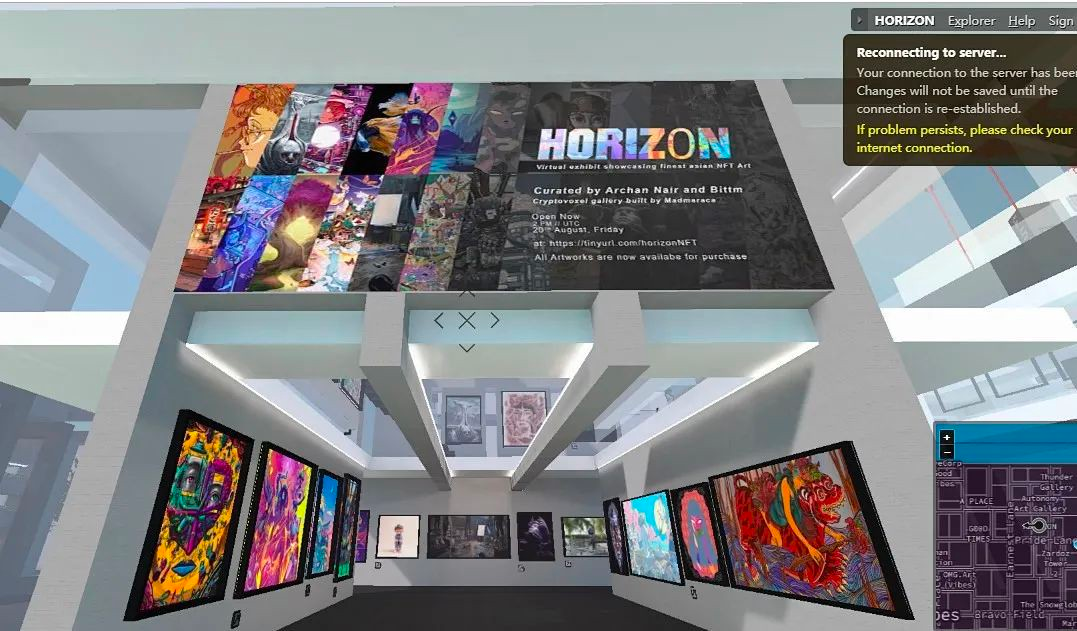
2. Branding/IP - e.g. Sandbox, Decentraland.
Land values do not change based on what players build, but are priced based on adjacent sites and the zoning in which they are located. While land in these projects lacks interactivity (as a static asset), there is a greater sense of players’ identity, community affiliation and and socialization.
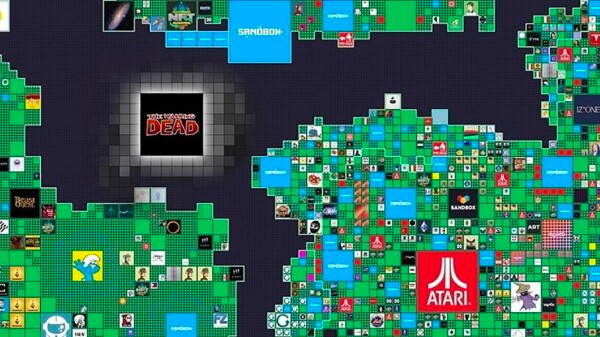
3. Social trade - e.g. as Worldwide Web, Ember Sword and Mirandus.
Landholders have more freedom to be more actively engaged in the game through operating their lands: whether it is improving infrastructure to collect entrance fees and toll fees, or forming guilds to expand their reputation, players are more closely tied to their lands.
However, land resources in these games act more as social and trading places, and can only play an indirect role in guiding player interactions, not as a direct benefit stimulus, so their player activity is largely dependent on the development of the community ecology.
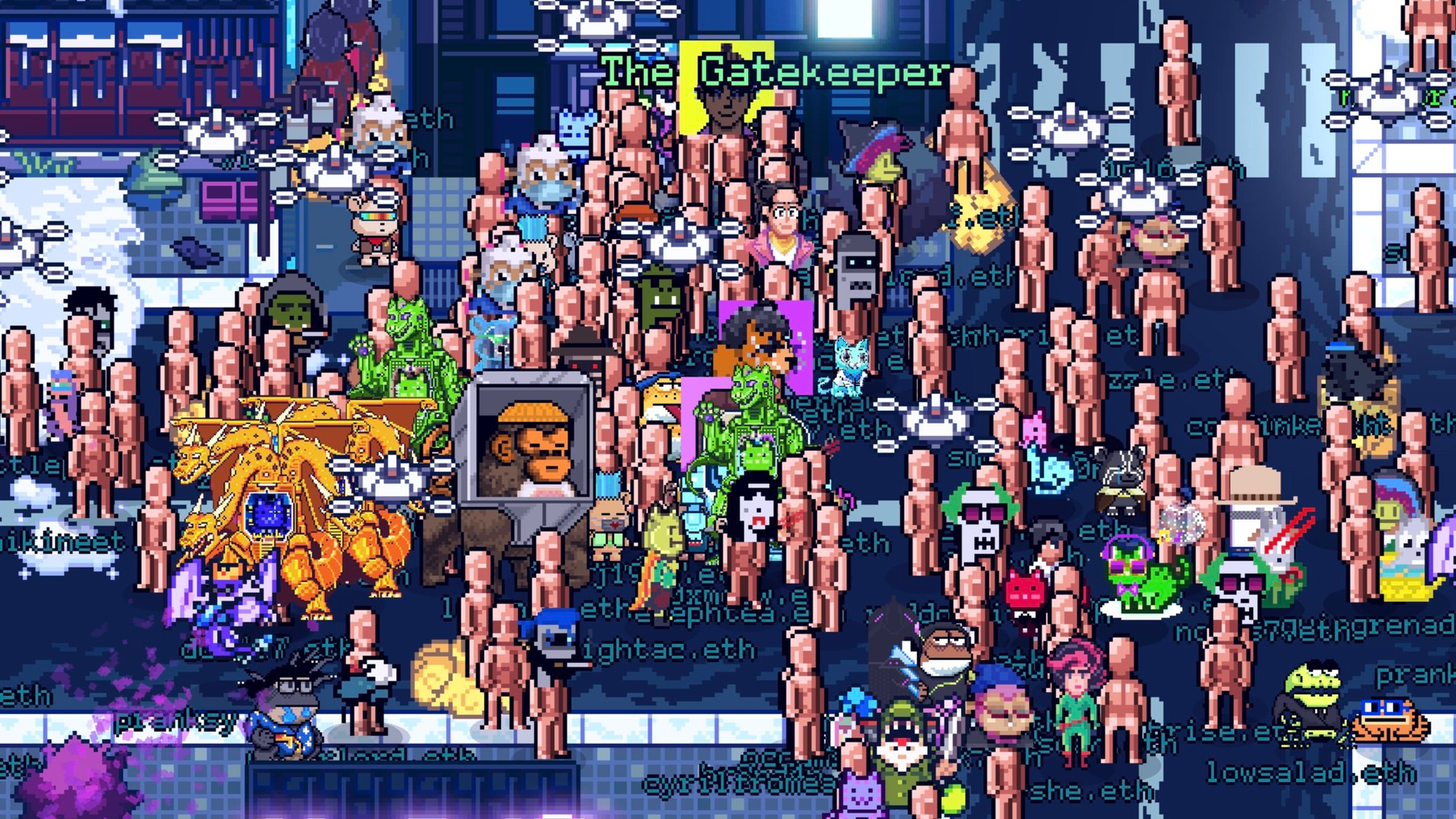
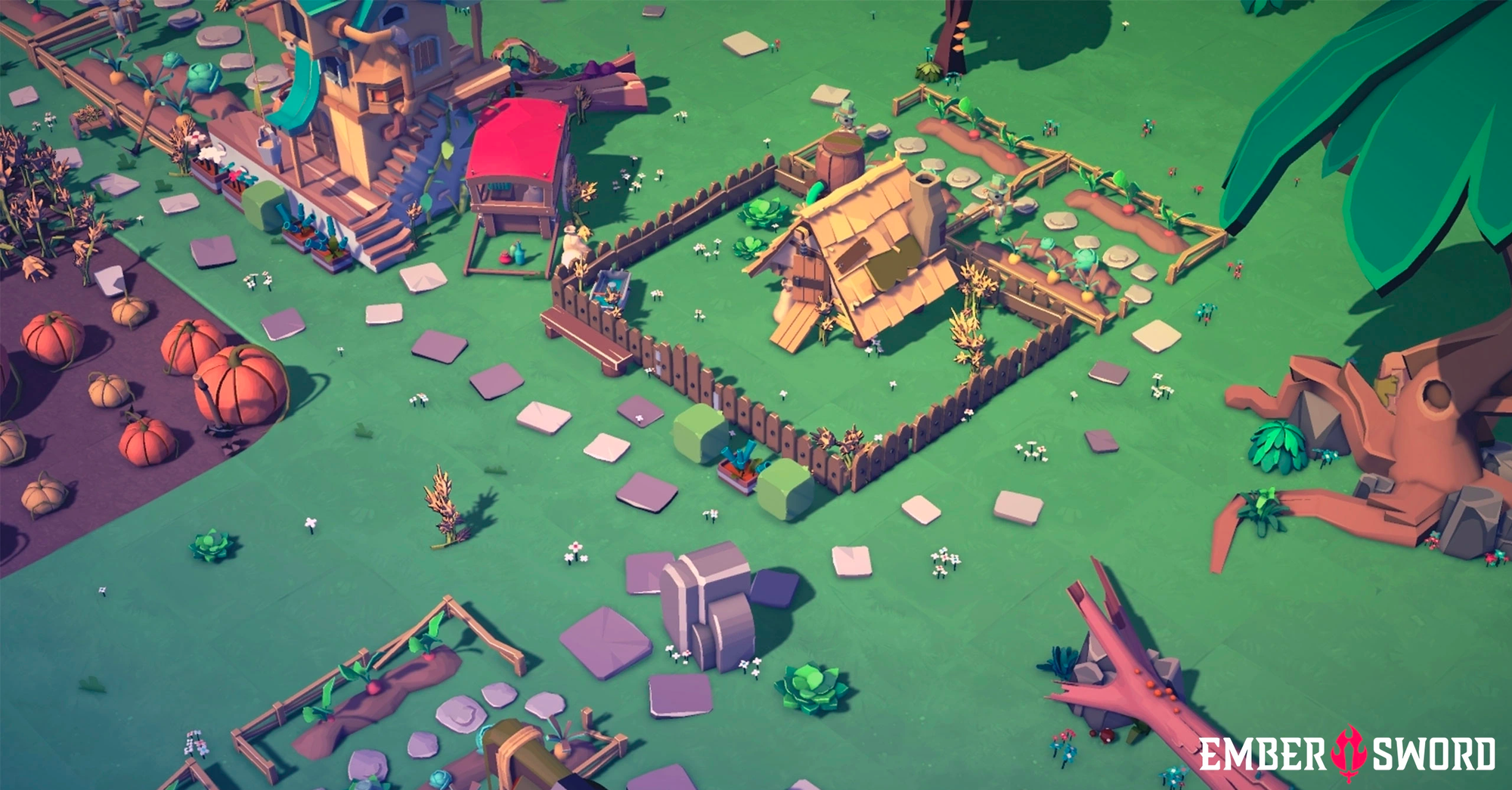
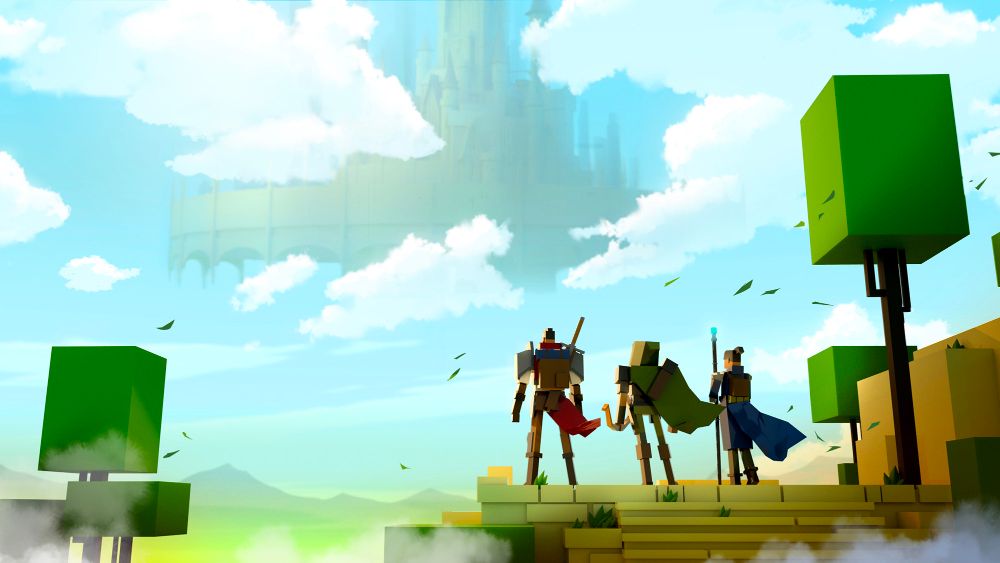
4. Production - e.g. Mines of Dalarnia, Gold Fever, Gotchiverse. By dividing players' functions and limiting their abilities, players are promoted to rely more on their playing strategies/skills and cooperation with others. These games emphasize more on the playability and competitiveness of the game (rather than relying on investors’ speculation)
The first two games, for example, divide the participants into two categories: land/planet holders and miners. Land/planet holders need to pledge tokens to maintain the planet's resource density and increase the planet's attractiveness, thus calling on ordinary miners to come to their territory for resource extraction. At the same time, miner players need to pay mining rent and entrance fee, which will be the source of income for the planet holder.
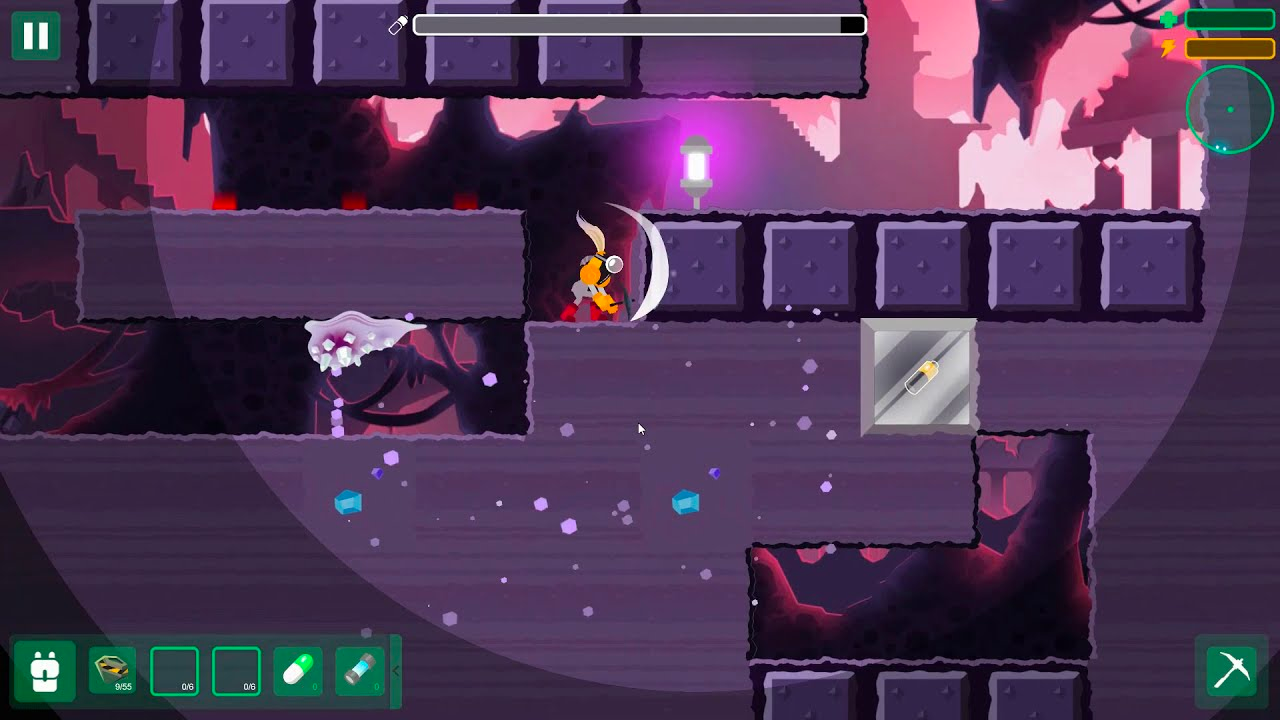
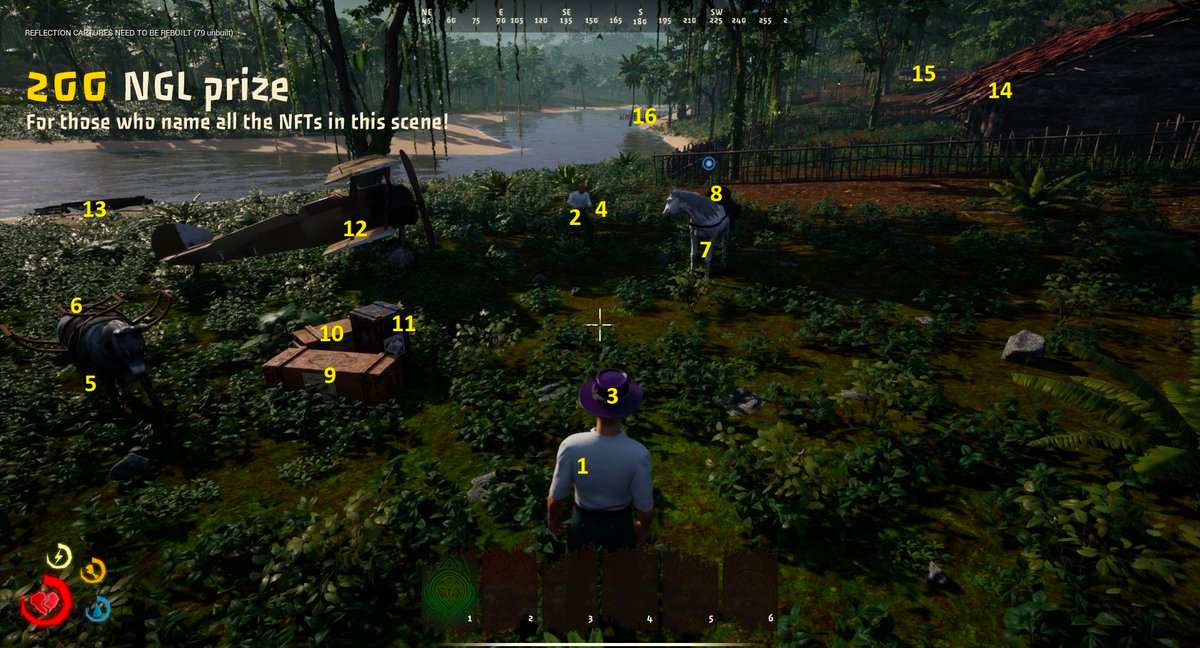
Gotchiverse is also designed to create a strong intra-board competition through the resistance mechanism, which promotes players to find strategies, grow their community and cooperate to win together.
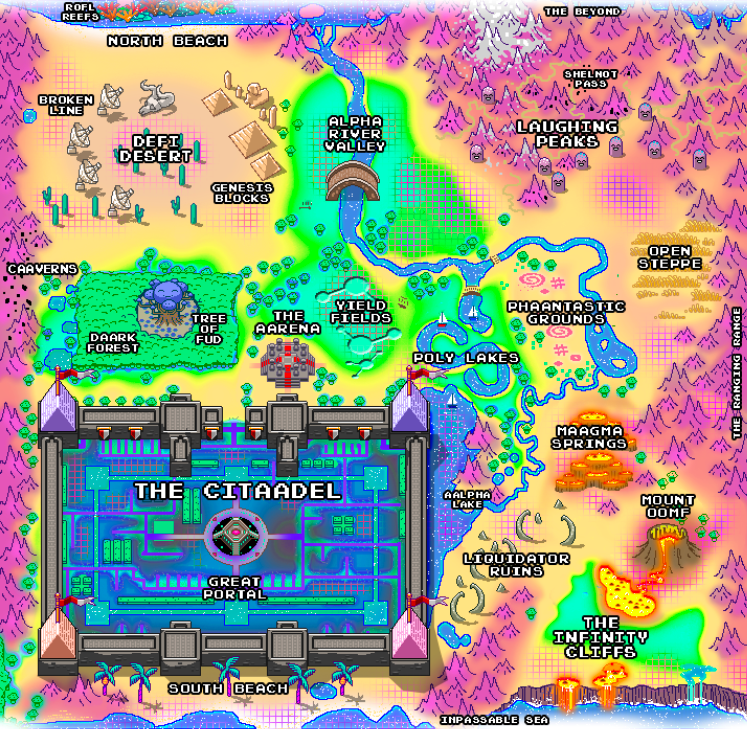
- Deflation - For example, Vulcan Forged uses incentives to further increase landholder participation: each time a landholder upgrades their land, they increase their staking rate, and all tokens from the staking will be burned. This is to reduce the amount of tokens in circulation and increasing the price of the token. The project even says that if more than half of the land exceeds level 7, 8 million tokens will be destroyed. With this incentive, landholders will actively recruit players to produce resources, stake their lands for a very long periods of time, and encourage other landholders to upgrade their land in order to quickly raise the token price.
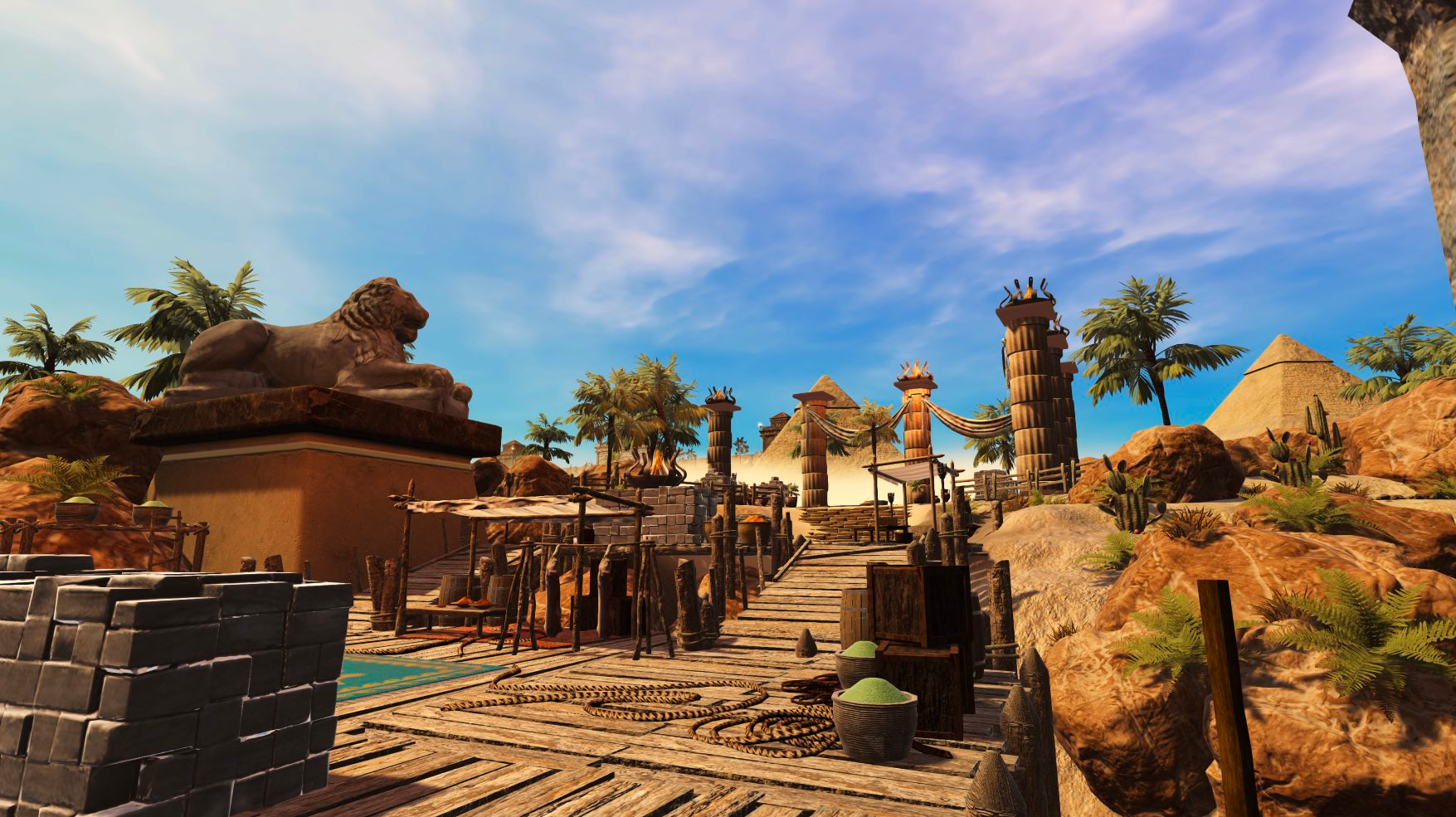
The second is to classify projects according to their stage, or maturity.
Me and another two friends have created the following table. We have tried our best to cover as many land-related Metaverse projects as possible. Feel free to add projects that are missed out.
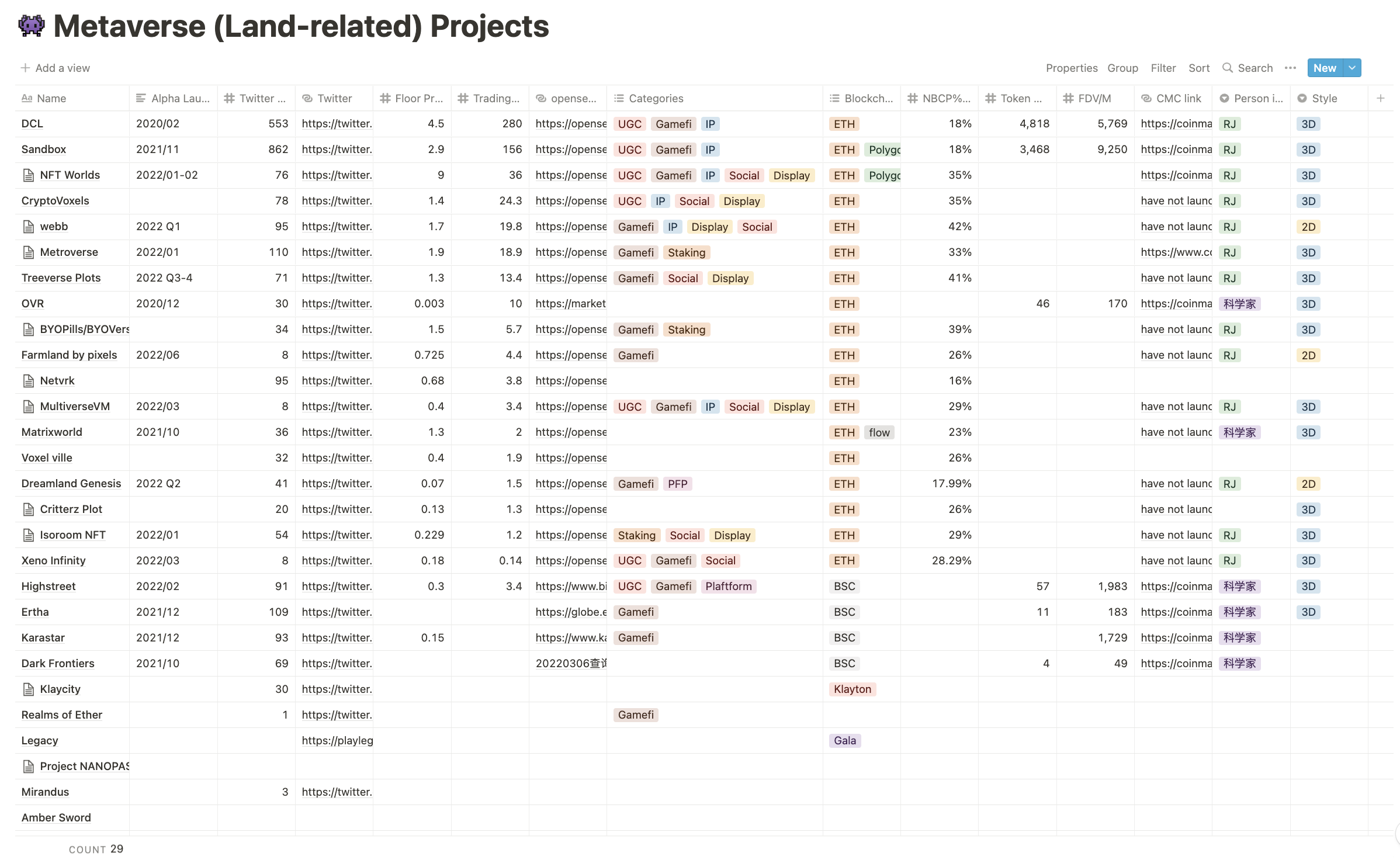
Since most of the (investors’) attention, innovations and resources are still on the ETH chain, we first filtered out the ETH chain projects (to give an examples).
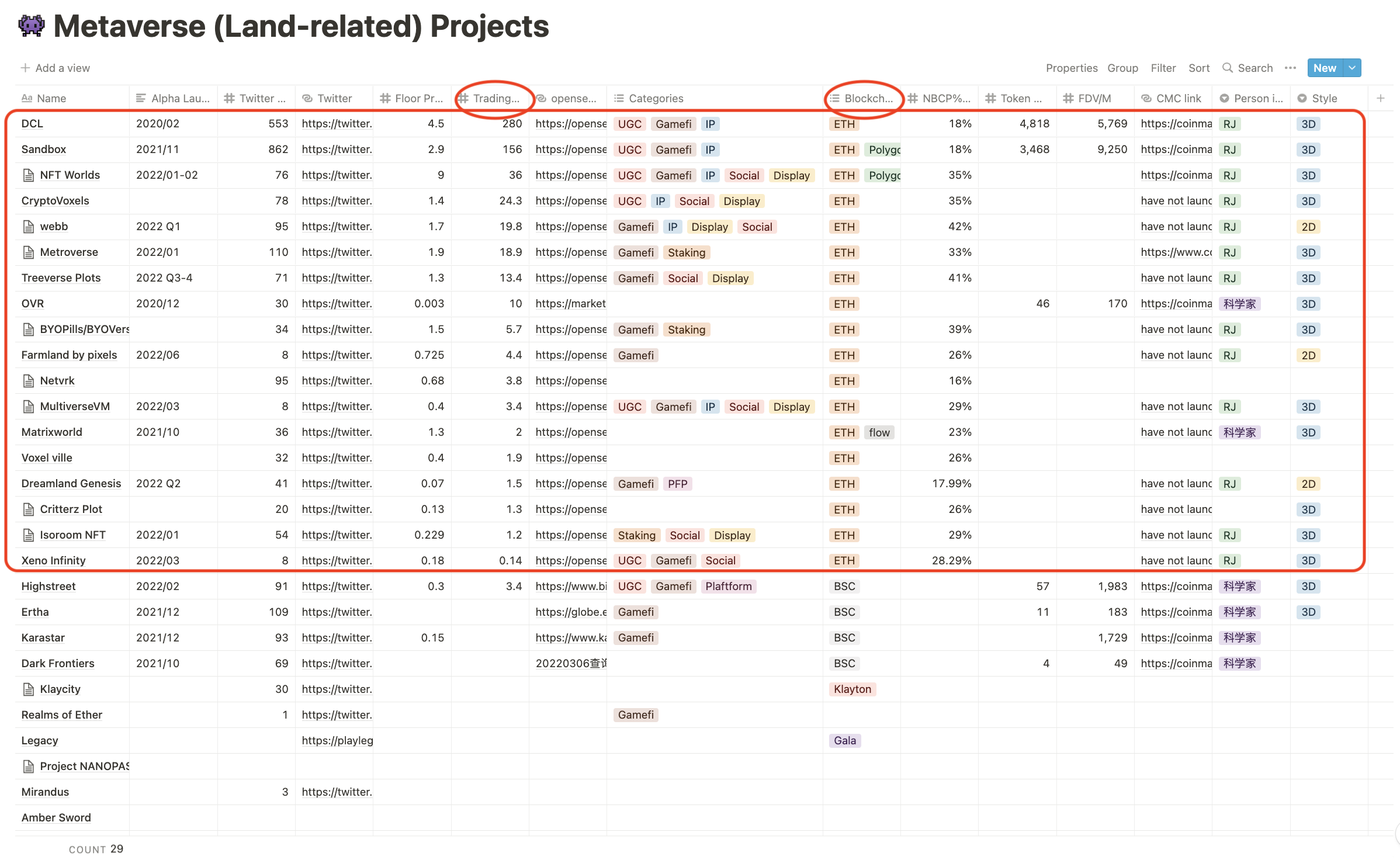
and then this category of projects is re-grouped according to their trading vol (or market cap), whether land has been issued, whether their alpha launches is developed.
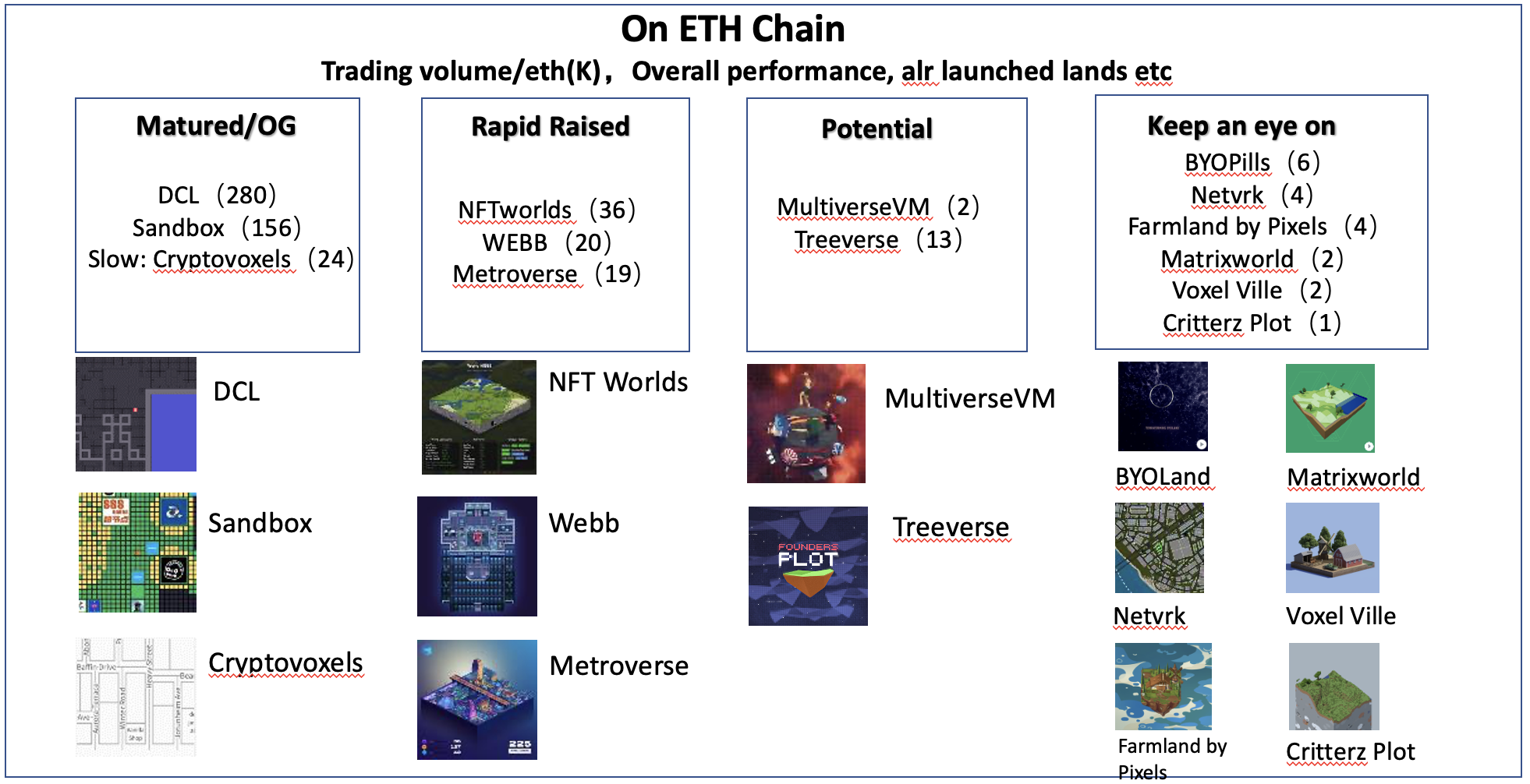
The third type is the classification of projects by the level of UGC (how much freedom do the players have to create/build).
This part is relatively simple and straightforward, and can be broadly classified into 2 categories.
- Those that allow players to create their own game rules. e.g. The Sandbox, Decentraland, NFT Worlds, Critterz
- The game rules are set by the project teams and the players need to follow the established rules of the game. e.g. Worldwide Web, Farmland by pixel
Ending
The Metaverse (land-related) projects are still in an initial stage, and there are hundreds of competing projects with different structures that reflect the various understandings what the “Metaverse” will entail.
Ultimately, they may slowly learn from one another thus becoming more similar; or they may become increasingly differentiated, from various aspects such as playability (gamefi), social attributes (socialfi) and financial attributes (defi). Whether a singular trend takes lead and prominence in the development of "land" projects, there will be huge growth and opportunities in all directions.
I'm looking forward to the future of the metaverse, which is filled with endless possibilities.
NFA, DYOR. Twitter: @KeRuijia
Reference: